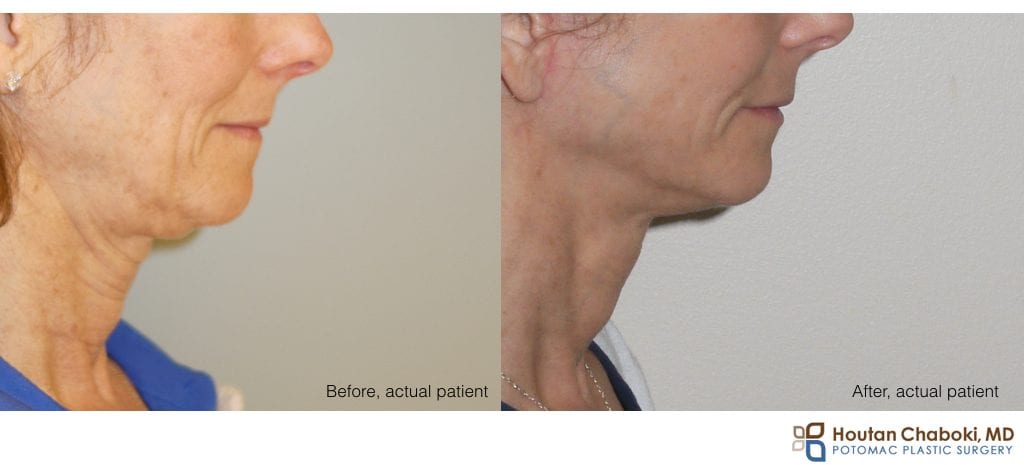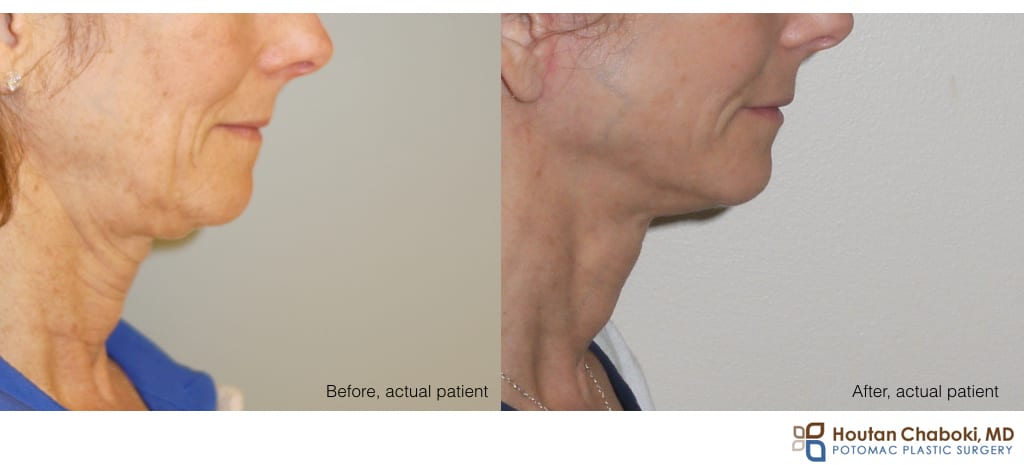Non-surgical facial rejuvenation remains very popular in plastic surgery offices and continues to grow in popularity. Wrinkle relaxers (ex. Botox®) and facial fillers (ex. Restylane®) are the most popular options. However, has plastic surgery gone away? Not yet.
There are non-surgical treatments to reduce fat (ex. Kybella®), soften wrinkles (ex. Botox®), plump lips (ex. Juvederm®), or fill dark circles (ex. Restylane®). However, there still isn’t a good non-surgical method to address loose skin. Skin laxity is one of many reasons patients still visit plastic surgeons. Whether it’s for the neck or eyes, plastic surgery remains the best option for patients with loose or sagging skin.
A variety of companies have tried to achieve some degree of skin tightening through energy-based non-surgical treatments, such as laser or light, radio frequency, cold or freezing, or ultrasound methods. None of the non-surgical treatments, however, have received FDA approval for “skin tightening” to address loose skin.
How may non-surgical skin tightening possibly work?
These energy based devices create a wound under the skin, affecting the deeper tissue, which may be the fat, muscle, and/or skin. Collagen denatures (i.e. changes shape) and the affected tissue then starts the healing process. The collagen shrinks a bit during this healing, which may lead to some skin tightening in theory. Skin tightening, if any occurs, primarily comes from the healing process after treatment rather than the device itself. The healing process is variable among patients.
The results with these energy based treatments do not occur right away, but rather develop gradually over time. Patients must be treated with these energy based devices multiple times, as one treatment is insufficient. In addition, results tend to be variable and subtle, if they occur at all, and may be temporary in some patients. Patients with more significant skin laxity tend to have the least amount of skin tightening with these devices, as compared to younger patients or those without loose skin.
We have discussed in previous posts some reasons patients may have a “full” neck, otherwise known as submental fullness or a double chin. Skin laxity is one of many reasons patients may dislike their neck. The before and after photographs demonstrate a patient with skin laxity and minimal neck fat who required a facelift to treat her submental fullness. She probably would not have been satisfied with a non-surgical skin tightening approach.
For patients with submental fullness from loose skin, then some form of plastic surgery with a facelift or neck lift is usually required. There is just too much skin to tighten without surgery. The excess skin must be lifted and trimmed with plastic surgery, as there is no good substitute for facelift or neck lift surgery for these patients.
Are these energy based non-surgical treatments worth it? Yes, for some patients, especially if they are unable or unwilling to have any form of surgery. As with anything in cosmetic medicine, there isn’t a “best” option for everyone. An evaluation with a facial plastic surgeon can help educate and provide appropriate solutions specific for each patient. For those with loose skin, especially with moderate to excess skin laxity, then some form of facelift surgery is usually required to tighten the skin in order to achieve desired results.
Have you tried an energy based non-surgical skin treatment? Was it worth it? Share your thoughts below.



Leave a Reply